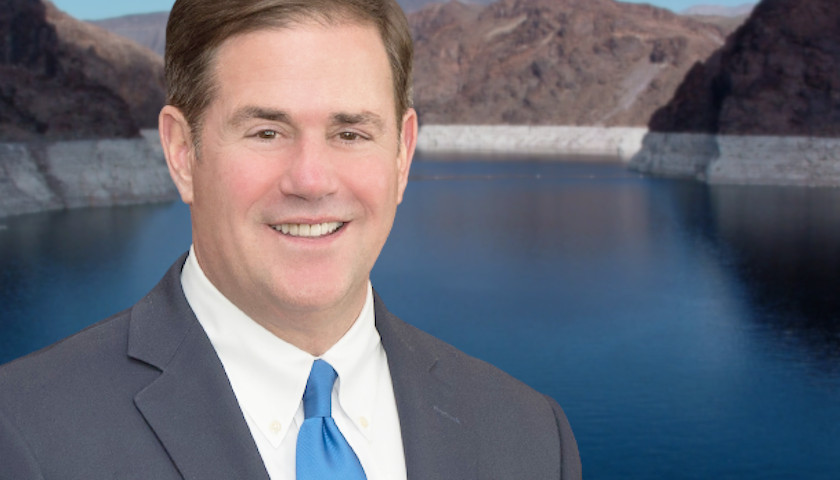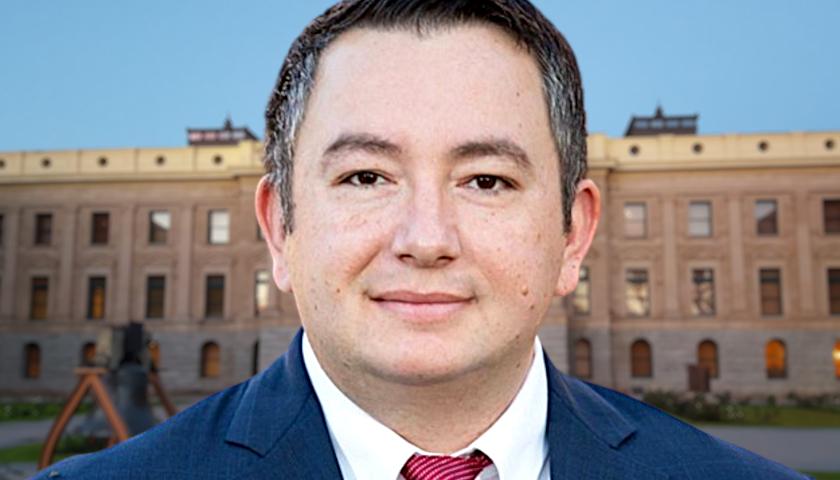Concerns are growing in Arizona that a water shortage may be looming. Governor Doug Ducey proposed creating an Arizona Water Authority (AWA) earlier this year in his 2022 State of the State address, but now the Arizona Senate majority caucus is suggesting a simpler plan that would use the existing Water Infrastructure Finance Authority of Arizona (WIFA).
Ducey’s plan doesn’t have the votes to pass the legislature, a spokesperson for the Arizona Senate majority caucus told The Arizona Sun Times. The proposal was intended to find middle ground between Ducey’s plan and the objecting legislators. “The memo was intended to be a starting point to reflect the direction of the Senate Majority Caucus and outlines changes to Gov. Ducey’s proposal. It is not a wholesale replacement. It preserves elements of the proposal that are not in conflict. However, the Senate Majority remains steadfastly committed to preserving the significant taxpayer investment for water projects, not for bureaucracy. WIFA already exists and works very well, so there is no need to create a new entity.”
Ducey’s plan to augment water resources, which he forged in partnership with Arizona Senate President Karen Fann (R-Prescott) and Arizona House Speaker Rusty Bowers (R-Mesa), would cost $1 billion and include the integration of new technologies such as desalination, start large scale water augmentation projects, and encourage reuse and efficiency with current supplies.
The Senate majority caucus explained its alternative plan in a May 16 memo to House leadership and the governor’s staff. WIFA was created in 1989 to provide loans to Arizona communities looking to improve their water and wastewater infrastructure, funding such projects. The Senators criticize Ducey’s AWA plan for creating an unnecessary new huge bureaucracy – the latest draft is 90 pages long. AWA would have eminent domain powers and the ability to assess fees, which could face strong opposition. A legislative committee to review projects would cost over $50 million.
An article in The Arizona Republic criticized the legislators’ plan for failing to include conservation or in-state augmentation projects. However, a spokesperson for the Arizona Senate majority caucus explained to The Sun Times that the criticism wasn’t accurate. “Administration through WIFA will expedite the funding of projects and reduce the overhead administrative costs, but not change the type of projects that would qualify, including conservation or in-state augmentation projects. Further details on those in-state projects and conservation plans would be added in as the bill is actually drafted.”
Water has become a huge concern in the state due to over 20 years of drought, leading to low water elevations in reservoirs. Lake Mead is at 31 percent capacity and still dropping. As a result, the City of Phoenix and several Indian tribes, as well as Las Vegas, have stopped taking their full allocations of Central Arizona Project water, as part of an agreement called the 500+ Plan to replenish Lake Mead. Tucson announced a few days ago that it was going to do the same. Lake Mead provides water for 20 million and farms in Arizona, Nevada, and California.
Arizona, Salt River Project and partners in Mexico, California, Nevada and the federal government looked into desalination off the Gulf of California. In a 2020 report, they warned that the Colorado River’s users in the Southwest and Mexico will face a water deficit of about 1.2 million acre-feet a year by 2035.
Groundwater is a limited resource, meaning that it can run out, but the state relies on it for 41 percent of water. Another 38 percent of Arizona’s water comes from the Colorado River. The Secretary of the Interior has declared a Tier 1 shortage at the river, which means Arizona will lose 18 percent of its water from it, or 8 percent of its total water.
Even though Arizona is using less water than it did over 60 years ago due to a decrease in agriculture, farming still consumes 70 percent of the state’s water supply. The rest of the state’s supply comes from the Salt and Verde Rivers, and from reclaimed water. Because the state has some of the highest growth in the nation, water usage is expected to increase.
Ducey signed an agreement in 2019 with other Colorado River basin states. Known as the Lower Basin Drought Contingency Plan, the agreement aims to protect the Colorado River system through voluntary reductions and increased conservation. The states agreed to take less water from Lake Mead over the next few years. The Colorado River is also used by Wyoming, Utah, Colorado, New Mexico, Nevada, and California.
One new way Arizona is dealing with the crisis is through indirect potable reuse, which means treating wastewater at a level making it safe for drinking. Ducey championed desalination in his State of the State speech, something Israel has made inroads into. Ducey signed a Memorandum of Understanding with Sonora Governor Claudia Pavlovich in May 2021, to research removing salt and other minerals from the water in the Gulf of California, also referred to as the Sea of Cortez. However, experts say results wouldn’t be seen for close to 10 years.
The federal Infrastructure Investment and Jobs Act included funding for “water” infrastructure. It addressed aging infrastructure and will help bring all water infrastructure up to 21st-century standards. Arizona projects include constructing new wastewater treatment systems, new basins to mitigate post-fire flooding, and water system improvements.
The City of Tucson has gotten people to cut their water usage to less than 80 gallons a day, far below the state average. There are no state-level restrictions on water in Arizona, but municipalities are permitted to limit water usage when there are shortages.
[wonderplugin_pdf src=”https://tennesseestar.com/wp-content/uploads/2022/05/Senate-Majority-Water-Investment-Memo_.pdf” width=”650″ height=”800px” style=”border:0;”]
– – –
Rachel Alexander is a reporter at The Arizona Sun Times and The Star News Network. Follow Rachel on Twitter. Email tips to [email protected].
Background Photo “Lake Mead” by Kjkolb. CC BY-SA 3.0.








